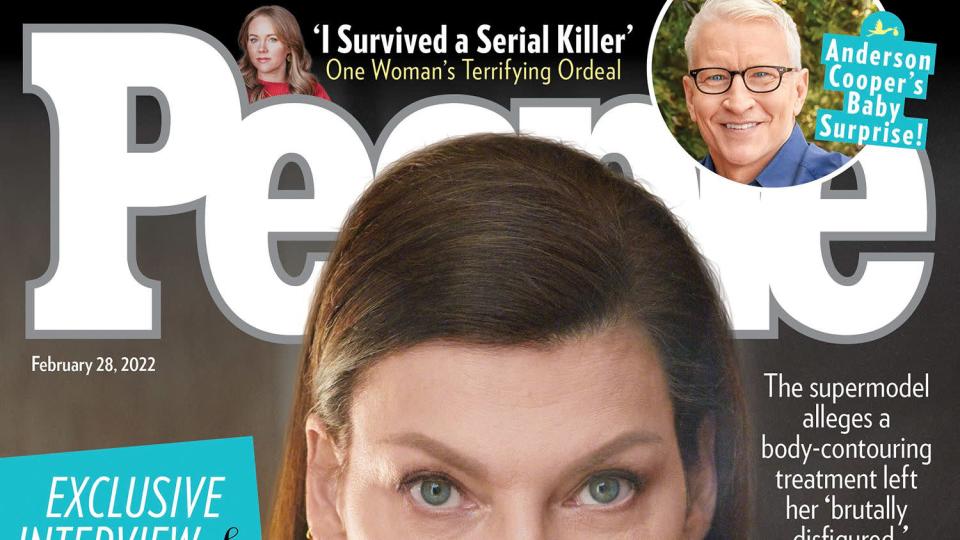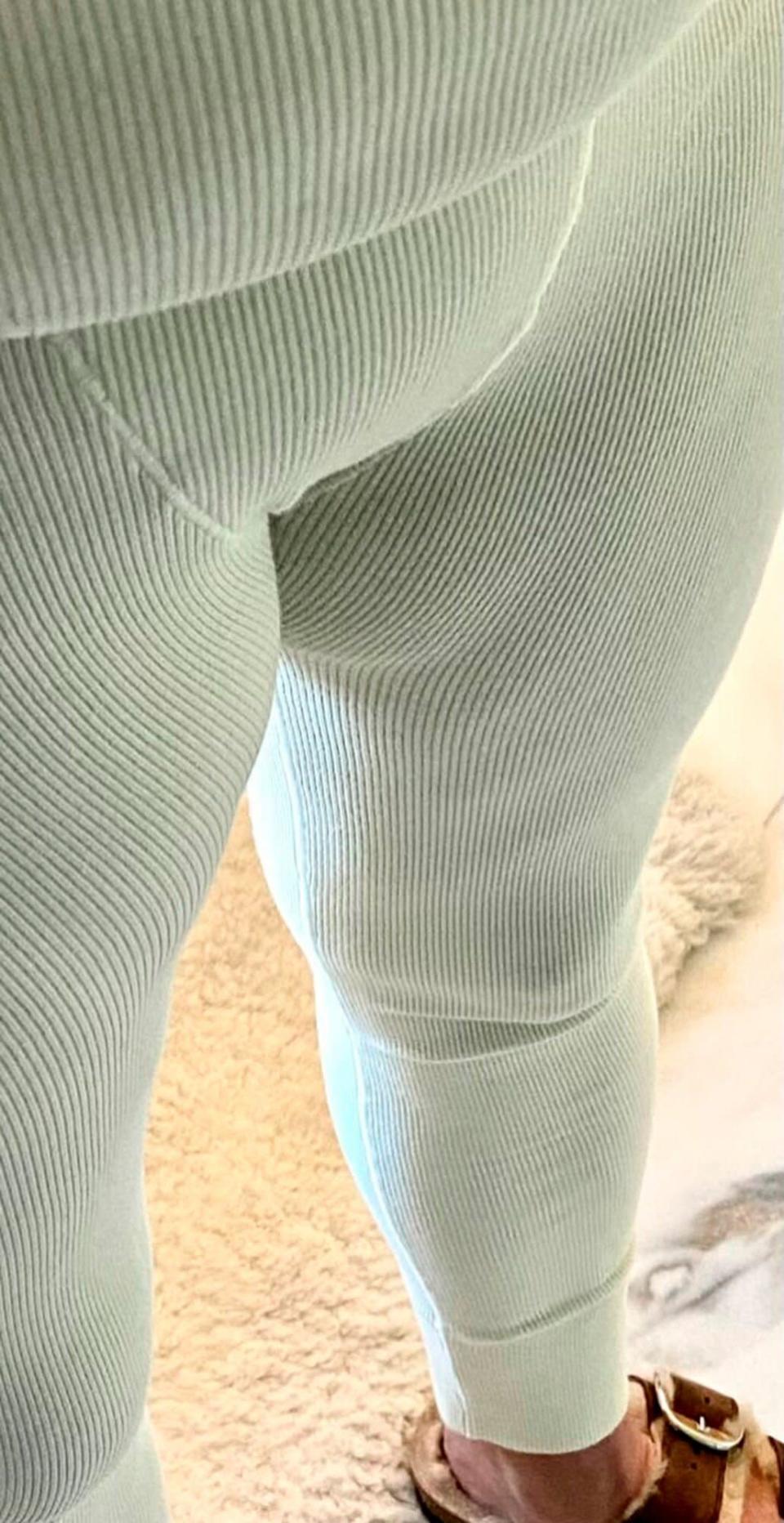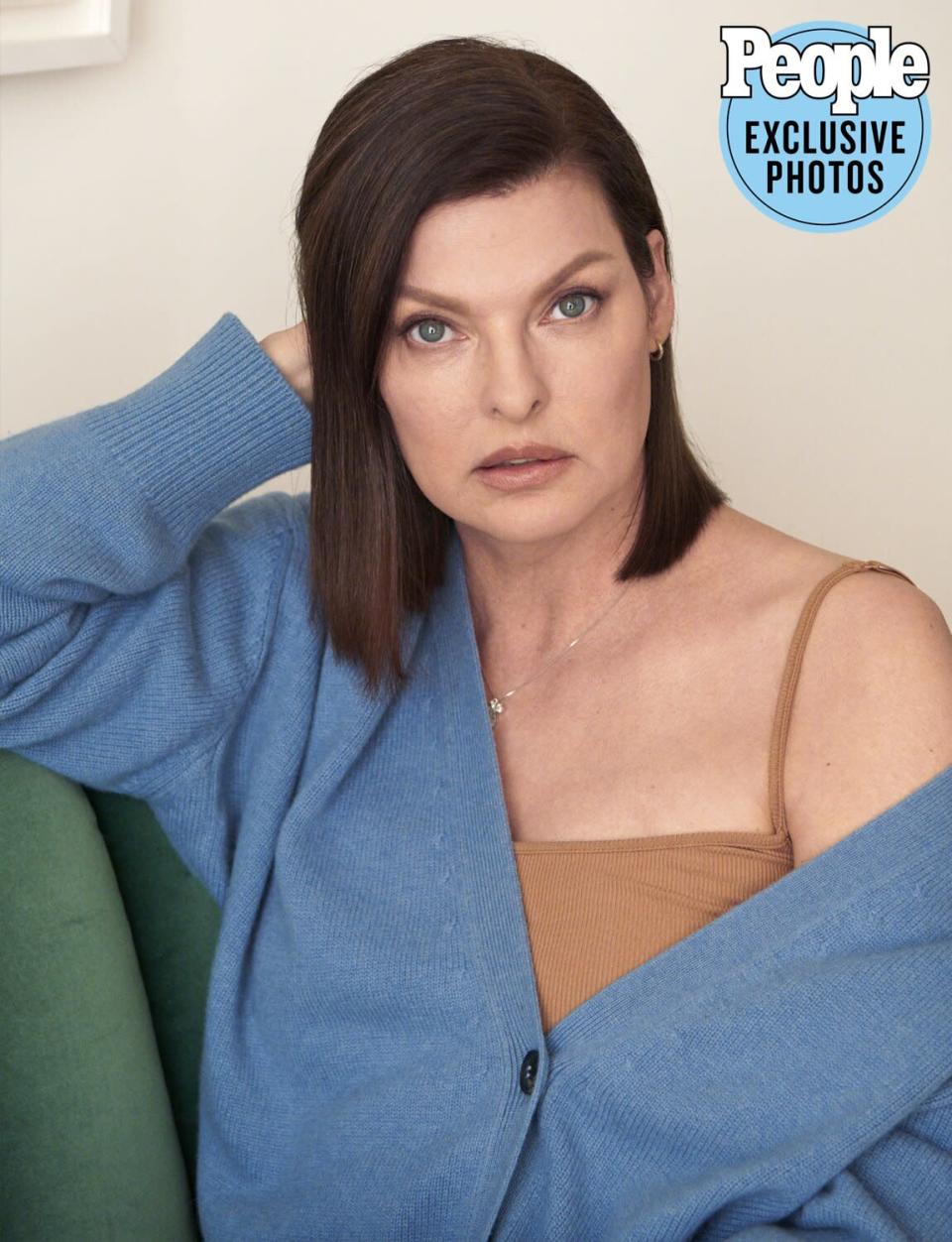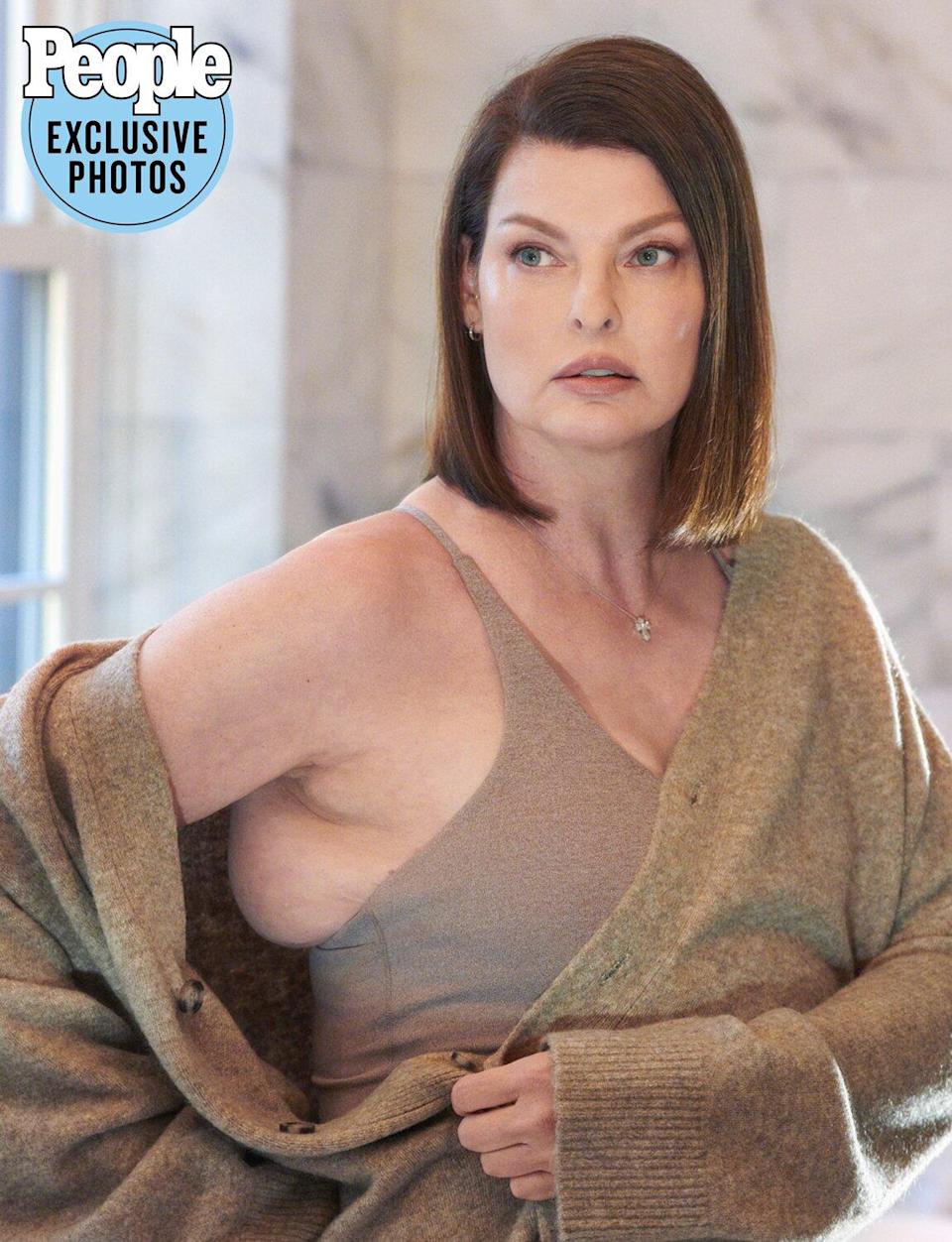Once one of the most photographed people in the world, supermodel Linda Evangelista has been living in seclusion for almost five years. Now she’s finally ready to share her story.
In this week’s issue of PEOPLE, Evangelista, 56, opens up about the emotional and physical pain that has cast a shadow on her life in recent years, after she claims CoolSculpting — a popular, FDA-cleared “fat-freezing” procedure that’s been promoted as a noninvasive alternative to liposuction — left her “permanently deformed” and “brutally disfigured.” Evangelista filed a lawsuit in September suing CoolSculpting’s parent company, Zeltiq Aesthetics Inc., for $50 million in damages, alleging that she’s been unable to work since undergoing seven sessions of CoolSculpting in a dermatologist’s office from August 2015 to February 2016.
“I loved being up on the catwalk. Now I dread running into someone I know,” she tells PEOPLE through tears in this week’s cover story. “I can’t live like this anymore, in hiding and shame. I just couldn’t live in this pain any longer. I’m willing to finally speak.”


Within three months after Evangelista’s treatments, she started noticing bulges at her chin, thighs and bra area. The same areas she’d wanted to shrink were suddenly growing. And hardening. Then they turned numb.
“I tried to fix it myself, thinking I was doing something wrong,” says Evangelista, and she began dieting and exercising more. “I got to where I wasn’t eating at all. I thought I was losing my mind.”
Finally, in June 2016 she went to her doctor. “I dropped my robe for him,” she recalls. “I was bawling, and I said, ‘I haven’t eaten, I’m starving. What am I doing wrong?’ ” When he diagnosed her with Paradoxical adipose hyperplasia (PAH), she says, “I was like, ‘What the hell is that?’ And he told me no amount of dieting, and no amount of exercise was ever going to fix it.”
PAH is a rare side effect that affects less than 1 percent of CoolSculpting patients, where the freezing process causes the affected fatty tissue to thicken and expand. “That’s the upsetting part,” says Dr. Alan Matarasso, a New York City plastic surgeon and professor at Northwell School of Medicine (he has never treated Evangelista). “Patients go in to have something reduced, and now it’s enlarged. And the problem with PAH is that, in some instances, it may not go away. In many circumstances the affected areas are no longer amenable to liposuction like they would’ve been in the first place.”


In a statement to PEOPLE, a representative for CoolSculpting says the procedure “has been well studied with more than 100 scientific publications and more than 11 million treatments performed worldwide” and added that known rare side effects like PAH “continue to be well-documented in the CoolSculpting information for patients and health care providers.”
FDA-cleared in 2010, CoolSculpting uses a process known as cryolipolysis. Based on the way frostbite affects humans, the procedure works by placing a roll of fat between two paddles, which cool the fat to a below-freezing temperature. Studies show that the treatment — which is popular because of its accessibility at medical spas and minimal recovery time — can reduce targeted fat deposits up to 20 percent.
For the full interview with supermodel Linda Evangelista, listen to today’s special episode of PEOPLE Every Day, the daily podcast from PEOPLE:
“I consider it a safe, effective treatment that’s worthwhile and has a high patient — satisfaction rate,” says Dr. Sue Ellen Cox, a dermatologist in Chapel Hill, N.C., who has conducted clinical trials on behalf of CoolSculpting and says she has successfully performed the procedure thousands of times. “If you can pinch an inch [of fat], you’ll be a good candidate for CoolSculpting. It’s the gold standard of noninvasive [fat-reduction procedures].”


Evangelista alleges that when her doctor contacted CoolSculpting about her PAH, the company told him they wanted to “make it right” and offered to pay for liposuction with a surgeon of the company’s choosing — a specialist she says they claimed to have used before — to correct the PAH damage. (Zeltiq declined to comment on Evangelista’s specific allegations, citing the pending litigation.) In her suit, Evangelista says that “on the eve” of her liposuction, she was informed that Zeltiq would cover the procedure only if she signed a confidentiality agreement. She refused and had the first of two full-body liposuction surgeries — which she says she paid for — in June 2016.
Following the surgery, Evangelista says, she had to wear compression garments, girdles and a chin strap for eight weeks. Otherwise, “the PAH may come back.” Which, she says, it did, even after a second liposuction in July 2017.


“It wasn’t even a little bit better,” she says. “The bulges are protrusions. And they’re hard. If I walk without a girdle in a dress, I will have chafing to the point of almost bleeding. Because it’s not like soft fat rubbing, it’s like hard fat rubbing.” She says her posture has also been affected because she can no longer “put my arms flat along my side. I don’t think designers are going to want to dress me with that” — she pulls down her shirt and shows the rectangular shape of PAH protruding from under her arm — “sticking out of my body.”
“I don’t look in the mirror,” she adds. “It doesn’t look like me.”


This is a vivid contrast to the popular Linda Evangelista the world first came to know 30 years ago. With her Sophia Loren-like face and instinctive understanding of photography and style she racked up some 700 magazine covers over the course of her career and served as muse to industry icons like the late Chanel designer Karl Lagerfeld and renowned photographer Steven Meisel. “No model was more super than Linda,” Vogue editor in chief Anna Wintour tells PEOPLE. Wintour put Evangelista on the iconic magazine’s cover 11 times.


Much of Evangelista’s story now — and her lawsuit — is about recovering her confidence and sense of self.
“Why do we feel the need to do these things [to our bodies]? I always knew I would age. And I know that there are things a body goes through. But I just didn’t think I would look like this,” she says of the protrusions, adding that she’s lost her identity. “I don’t recognize myself physically, but I don’t recognize me as a person any longer either. She” —and she means Linda Evangelista, supermodel— “is sort of gone.”
But she remains optimistic that sharing her trauma will provide comfort to others suffering from similar situations.


“I hope I can shed myself of some of the shame and help other people who are in the same situation as me,” she says. “That’s my goal.”
She says that’s one of the main reasons she first broke her silence on Instagram last year, leading to support from her fellow supermodel tribe, including Cindy Crawford who cheered at the time, “Your strength and true essence are forever recognizable and iconic!”
And while Evangelista fights daily to regain what she’s lost, she knows one thing for sure: “I’m not going to hide anymore.”
For the full, exclusive interview with Linda Evangelista, pick up a copy of PEOPLE’S latest issue on newsstands Friday.




